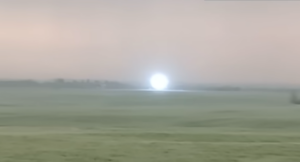Chinstrap penguins are champions of the power nap. They sleep for around 11 hours a day, but this is made up of thousands of micro-sleeps that last just four seconds at a time. This sleeping pattern has not been seen in any other living creature. Scientists are amazed by the way the black-and-white birds catch some shut-eye.
We know that all animals need to sleep, but how they have evolved to do this varies dramatically. As humans, we are told we need around eight hours of sleep a night. Bush elephants and giraffes survive on two hours of sleep a day. Giant frigate birds sleep for just an hour a day while migrating, and then 13 hours a day once in their nests.
Dolphins, ducks, and seals can sleep with one half of their brain at a time to always maintain some level of awareness. Animals of the same species rely on far less sleep in the wild than they do in captivity.

A colony of chinstrap penguins. Photo: Shutterstock
Captive penguins sleep longer
Chinstrap penguins have evolved to be masters of the micro-nap. In 2014, behavioral ecologist Won Young Leen noticed something unusual in Antarctica. The penguins would nod off for a few moments, then wake back up continuously. He never saw them take an extended sleep.
This piqued his interest, as this is not the case with captive penguins. Captive penguins sleep for short periods rather than one long sleep, but those periods were much longer than a few seconds.
In 2019, the researchers went back to Antarctica to try and find out what was going on. They fitted 14 penguins from a breeding colony with electrodes to measure brain activity, movement, and body position. They also filmed the birds for all 11 days of the study.

A chinstrap penguin looks over its shoulder. Photo: Shutterstock
Longest sleep lasted 34 seconds
Every day, the birds racked up an average of 10,000 micro-sleeps that lasted around four seconds each. The longest sleep they recorded was only 34 seconds long.
“We’ve never seen such a sustained fragmentation [of sleep] in any other species,” says study co-author Paul-Antoine Libourel.
Even more surprisingly, during these four seconds, the penguins went into a stage three deep sleep. They seemed to be able to reap the benefits usually associated with prolonged sleep in seconds.
The bouts of sleep varied slightly, depending on whether the penguin was caring for an egg or hunting at sea. Penguins share incubation and hunting duties. The parent sitting on the egg slept shorter and more often. At sea, they slept far less but could micro-sleep while floating in the water.

Chinstrap penguins with their eggs. Photo: Shutterstock
Adaptation to protect eggs?
Researchers think that this sleeping pattern could be a mechanism to protect their eggs as they are developing. It allows almost constant vigilance in a crowd of 27,000 penguins and against any predators. Some have argued that they are in such a noisy and crowded environment that snatching a longer sleep is impossible.
The researchers now plan to study chinstrap penguins outside of breeding season, to observe whether these thousands of micro-naps are their usual way of sleeping or whether they just do it while their eggs are developing. They also want to study how other polar animals, such as Weddell seals, sleep, to see if there are similarities.






